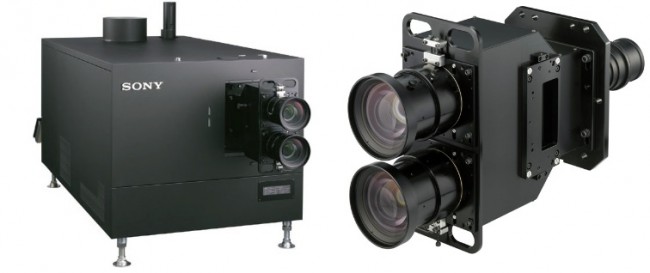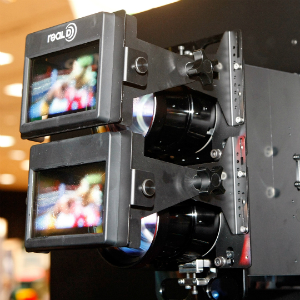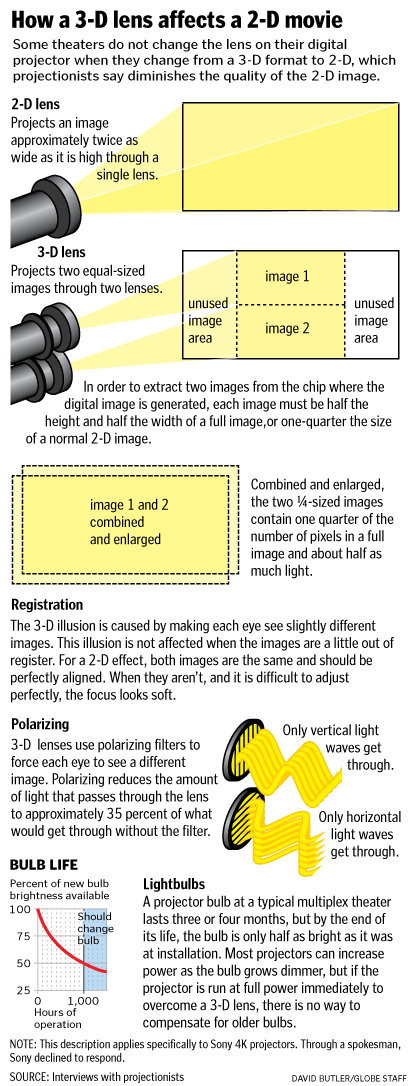In addition to being the last expert in the post-production chain, the projectionist also is the last person in the chain that starts with the security experts who literally keep the keys to the safe.
No less urgent is the organization of the presentation, which begins with the negotiations between the studios and distribution and advertising groups and involve the exhibition management. Soon this will include the added duty of presenting more and better closed and open caption presentations for an audience who have been largely left out of the mainstream cinema theater culture, the deaf, hard of hearing and visually impaired audience.
Add to that the mixing in of various forms of alternative content, which means satellite feeds and interface boxes with very nuanced choices (neither the NOC nor the cinema manager is going to change from side to side from sequential or make certain the encryption code is set right for a particular show.) Bluray means audio changes, and last years inexpensive cable boxes won’t work soon in the cinema. [Unmentioned: a truly professional satellite presentation always has backup everything – dish, electronics, test gear. The kit is incredibly cheap, especially compared to returning the cost of premium tickets. Of course, this should never be brought up since we don’t want to scare the cinema owner who already has made a 4X investment in dcinema gear compared to the film equipment it is replacing. (“We are solving a problem that didn’t exist”, as one studio exec said.)]
In the rapidly disappearing days of film presentation, the projectionist assembled the film from multiple cans, put it onto the mechanical film chain, and made certain that the focus was correct. In the best of cases they made certain that the gates and pull-downs and pulleys weren’t physically harming the film, although there wasn’t much that could be done to prevent the enormous amounts of heat from bringing the plastic to its melting point, with its two harmful effects: desaturating the colors from the film, and creating a dust magnet from the electrostatic condition of all that heat and change that melts the dust into the cooling film. Except for keeping the bulb fresh and the voltage up, there wasn’t much more that a person could do for the picture. [We are, but we shouldn’t be, avoiding the audio topics of dcinema in this document.]
With digital projectors, all of the parameters of the color and luminance are available to perfect. There is no reason for a properly sized system to be anything less than up to SMPTE/ISO specifications. According to some manufacturers, today’s xenon bulbs don’t really even gain much more time or use less electricity by tweaking them down.
The recent kerflufle brought on by the Boston Globe article points to other issues that a projectionist should be solving. 3D alone is an issue that involved color shifts and brightness issues that should be controlled between each movie. When cinemas play 2D and 3D on the same screen, it isn’t surprising that something will suffer. It shouldn’t be the audience, but that is what is happening.
Then there is the system itself. Not the media player (SMS)/projection/audio/satellite feed/bluray player system at every port hole, but the IT system that holds all the SMS systems to one theater management system – with all the projectors filtering data back as required for keeping logs and ‘state of health’ info to network operation centers (NOCs). The projectionist is the person who has to respond quickly and well to the experts at the other end. For all the hype about what can be monitored at a NOC, it is hundreds of times better if there is a person to communicate with at the other end who is versed in perceiving the extant situation.
Perhaps there are people who have been around banks of computers that work flawlessly for days and months and years. But more common is the reality that computers always need some attention from someone on-site.
[The unwritten topic concerns the issue of how well D-Cinema systems are defended in this age when nothing seems sacred. There are weekly reports about corporations with elaborate staff and technology, who still have secure information exposed. So far, dcinema has been flying under the radar, but with ugly habits. The US military took two years to clean up vital systems after an infected (probably targeted) USB stick put secret data into criminals control. See: Infected USB caused biggest US military breach ever.]
Point being, a trained projectionist in the digital age is a Solution to many a Why.
Yet when asked, two large cinema chains acknowledged that they didn’t have an updated job description for Projectionist. Booth Monitor was one recently seen posting.
What is a projectionist in the digital age? What are the responsibilities? Is it reasonable that these responsibilities will get fewer as the technology evolves?



